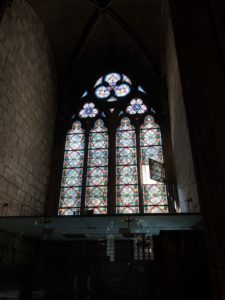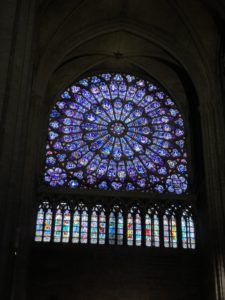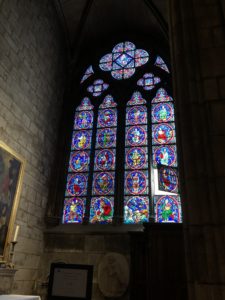Paris, the capital of France, is also the capital of history, arts and literature. I had already written a blog on the national day and the world cup in Paris, but I think it is necessary to write another one specifically for my cultural experience in this city.
- Notre Dame de Paris in general: Bearing the same name as our university, Notre Dame de Paris enjoys its renown as the epitome of gothic cathedrals. I paid the visit of this grandiose architecture when I came to Paris for the first time. Coincidentally, my friend Elaine Chen (Yanlin Chen), who happened to be another SLA recipient, was in Paris at the same weekend. As I got to the entrance of the cathedral, a long queue has already formed. By the entrance, I could already see the flying buttress, and the stained glasses reflecting the rayons of the blinding sunlight. When we got into the cathedral, there was a French mass going on. We weren’t able to comprehend so we chose to walk around and appreciate the beauty of the interior. Besides some little chapels dedicated to various saints, an exhibition on the history of Notre Dame de Paris was held at the ambulatory. The great monument was completed (mostly) in the second half of thirteenth century, and therefore set the standard of a new architectural style—-gothic. However, during the French Revolution, when the poor rallied against emperor and the catholic church, the monument was destroyed as being the symbol of catholicism. In nineteenth century, thanked to the great French writer Vitor Hugo, who was inspired by the decrepitude, who wrote the book Notre Dame de Paris (Hunchback at Notre Dame), bringing the once splendid architecture back to the public attention. Thus, the restoration of the cathedral took place in nineteenth century.
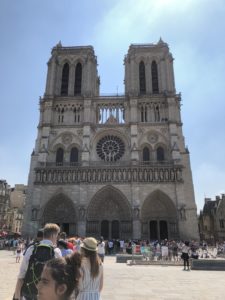
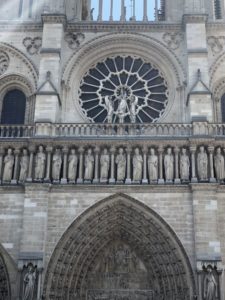
2. Flying Buttress: one of the most outstanding features of gothic cathedral is their flying buttress. Before the gothic period, the romanesque style dominated. Since the romanesque architecture mainly used the walls and the vaults to sustain the whole construction, its wall was immensely thick so as to bear the force of the vaults and ceilings. As a result, the vaults had to be perfectly a semicircle made by wedge-shaped stones, otherwise the distribution of weight would be uneven, and thus leading to the collapse of the vaults. However, the gothic architect invented the flying buttress, which sustain the whole architecture from the outside, allowing the monument reached a greater height. Moreover, the delicate carvings on the flying buttress made it not only practical, but also an important decoration of the architecture as well.
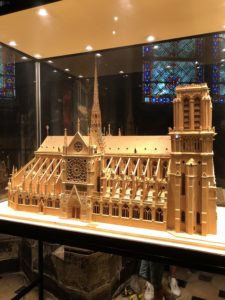
3. Stained Glasses: The stained glass is another creation of the gothic style. Due to the thick walls, the romanesque architectures were not able to apply much decoration on their windows. In fact, they usually had tiny windows. However, flying buttress freed the wall from the burden of sustaining the weight, allowing novel inventions on the windows.
